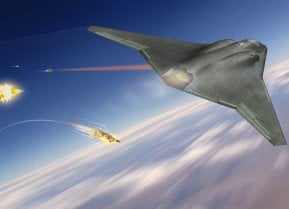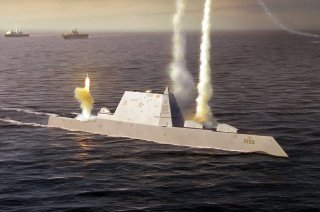Zumwalt-Class: The 1 Word You Can't Call These 'Stealth' Destroyers
The Zumwalt-class destroyer, once heralded as the future of the U.S. Navy, has become a costly misstep. Initially envisioned as a 32-ship fleet, only three were produced due to budget overruns and performance shortfalls, leading the Navy to revert to the Arleigh Burke-class destroyers.
Battleship: The Zumwalt-class destroyer, once heralded as the future of the U.S. Navy, has become a costly misstep. Initially envisioned as a 32-ship fleet, only three were produced due to budget overruns and performance shortfalls, leading the Navy to revert to the Arleigh Burke-class destroyers.

-Built with stealth-focused designs, including a tumblehome hull and composite deckhouse, the Zumwalt boasts a radar profile akin to a fishing boat. However, questions about its value remain, as its stealth capabilities are undermined during active combat.
-At $8 billion per ship, the Zumwalt now symbolizes procurement inefficiencies in U.S. defense spending.
The Zumwalt-Class Destroyer’s $24 Billion Lesson in Stealth Warfare
The Zumwalt-class destroyer was billed as the future of the U.S. Navy. Built with a low radar cross section and displaying an impressive array of futuristic weaponry, the Zumwalt was supposed to replace the Arleigh Burke-class destroyer that has been in service since the 1980s.
The Navy intended to purchase 32 Zumwalts. But when the project went way over budget and performed below expectations, the Navy dropped its support. The service even asked Congress to stop delivering new Zumwalts and instead to deliver more Arleigh Burkes.
Just three Zumwalts entered service before production ceased and the once-future vessel of the Navy became a mistake of the past.

Zumwalt-Class: The Ship of the Future
Perhaps the Zumwalt’s most important design feature is its incorporation of stealth technology. Despite being 40% bigger than the Arleigh Burke, the Zumwalt’s radar cross section is no larger than that of a fishing boat.
To reduce the Zumwalt’s radar cross section so drastically, the vessel was built with a tumblehome-style hull, which narrows above the waterline. The tumblehome is distinct today, but the hull shape is hardly new. Wooden warships of old often featured the design. Late 19th-century warships also floated on tumblehome hulls, now made from steel. But the design quickly fell out of fashion after three of four Russian tumblehome-style battleships were sunk during the Russo-Japanese War. Only now, with modern navies seeking to gain a stealth advantage, is the tumblehome hull, with its low radar cross section, being revived from obscurity.
The hull is not the only thing bolstering the Zumwalt’s stealth. A composite deckhouse encases the ship’s sensory and electronic equipment within hard-to-detect materials. Between the hull and the composites, the Zumwalt is about 50 times harder to locate on radar than preceding destroyers.
The Zumwalt is also an uncommonly quiet vessel. Its acoustic signature is closer to that of the Los Angeles-class submarine than to the Arleigh Burke.
Still, questions lingered about the application of the Zumwalt’s stealth. The ship was supposed to provide fire support against land-based targets, meaning it would operate in crowded and close-to-shore environments. In such circumstances, a low radar cross section is not very useful – an enemy can find the thing in their binoculars. Plus, as soon as the Zumwalt begins firing its impressive weapons systems, as it was designed to do regularly, the ship’s stealth features will be compromised.

The Ship of the Past
The total cost of developing three Zumwalt destroyers was $24.5 billion – about $8 billion per ship. That’s a bad investment. Lawmakers naturally started to ask whether the surface vessel cost too much for the capabilities it provides.
Mike Fredenburg, writing for the National Review, said that the Zumwalt was “emblematic of a defense procurement system that is rapidly losing its ability to meet our national security needs,” adding that it was an “unmitigated disaster,” and a “ship without a mission.”
About the Author: Harrison Kass
Harrison Kass is a defense and national security writer with over 1,000 total pieces on issues involving global affairs. An attorney, pilot, guitarist, and minor pro hockey player, Harrison joined the US Air Force as a Pilot Trainee but was medically discharged. Harrison holds a BA from Lake Forest College, a JD from the University of Oregon, and an MA from New York University. Harrison listens to Dokken.
Image Credit: Creative Commons.


